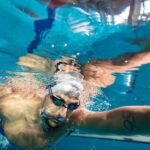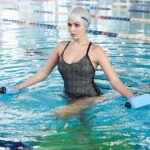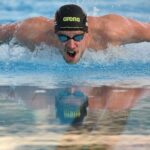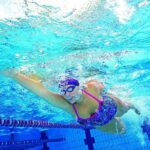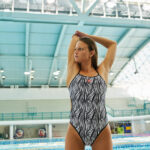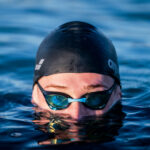The Essential Core Exercises for Swimmers
All swimming strokes are designed to propel you in a straight line, whether that be forward with freestyle or backward with backstroke. Learning how to swim without any of your body sagging toward the bottom of the pool is imperative for a streamlined and efficient stroke. Keeping the upper body straight and the legs in line all comes from having solid core strength.
In this article, we’ll teach you why core strength is essential for superior body position in the water. Then, we’ll share some simple core exercises for swimmers that will be just as beneficial for beginners as they are for Olympians.
Why Do Swimmers Need Core Exercises?

The obvious difference between swimming and many other dryland sports is that our workouts force our bodies to move through water. During dryland exercises, we conveniently have the ground as a solid base to push off. We can rely on our lower body while running or doing squats or our upper body during push-ups and bench press. The core is still active, but it’s other muscle groups that are doing the majority of the work.
Even though swimming requires full-body strength, it’s a strong core that provides strength and stability to the arms and legs during demanding strokes. With no ground to push off, it’s our core that provides the balance, momentum and base of all of our movements in the water.
Keeping up with core exercises for swimmers can also have a positive effect on the nuances of your swimming performance. Having overall stronger core muscles means you will have strengthened hip flexors and obliques. It’s these muscle groups that will give you better control of the movement across the length of your arms and legs. Get into the mindset of “everything comes from the core,” and you may see more efficient flutter kicks and an improved freestyle catch in the near future.
Easy-to-Learn Core Exercises for Swimmers
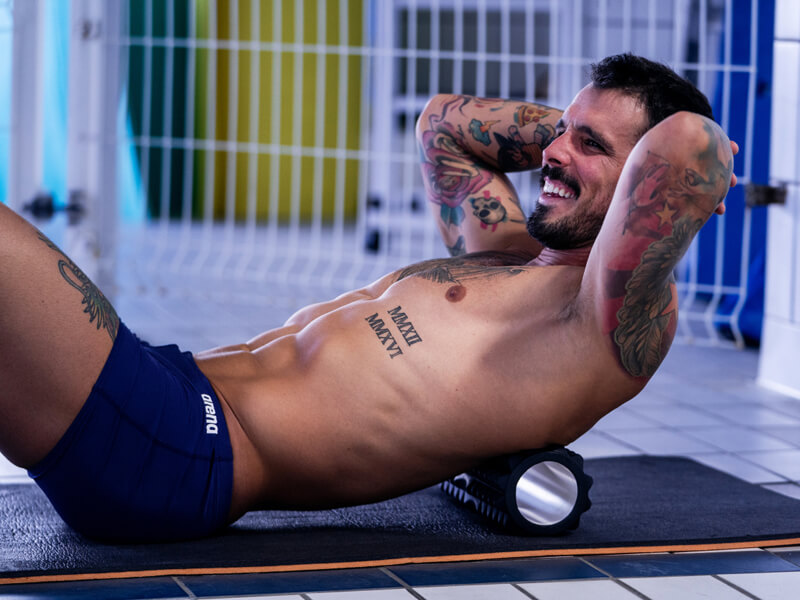
Hopefully, we have you convinced of the advantages of incorporating core workouts into your training plans. Let’s take a look at some core exercises for swimmers that you can perform with little equipment. Since you are always training your core somewhat in the pool as you swim, we’ll share dryland workouts that really allow you to isolate and strengthen your core muscles. Remember to always warm up before these swimming workouts and cool down when you’re finished.
Most of the core exercises for swimmers below can be performed by simply using a yoga mat. If you don’t have one of those, you can just use the carpet in your home. These workouts can be performed at home, in the gym, and even poolside.
Weighted Russian Twists
Sit down on the ground (make sure the surface is soft) with your legs bent at the knees. Lean back until you feel your abdominal muscles engage. Select a medicine ball or dumbbell that is comfortable for your abilities, and hold it above your chest. Now intermittently push each elbow past your back, keeping the weight held above the chest. For increased difficulty, you can raise your feet off the ground.
This is a great exercise for the obliques and hip flexors making it beneficial for your swimming technique.
Plank Variations
The plank is one of the classic bodyweight ab exercises. It doesn’t require any movement, and long sets can provide challenging core training. The world record plank is nine hours 30 minutes and one second. Don’t worry though, you don’t need to hold it for that long to benefit your core.
There are different variations of planks to choose from, including:
- High plank: This is a good one to start with if you’re a beginner. To perform this core exercise for swimmers, simply get in the position you would to perform a push up. Make sure that your hands are in line with your shoulders.
- Low plank: This is the type of plank you want to be doing if you dream of having a six pack. Start by getting into a high plank position. Then, lower yourself from the high plank, and rest your weight on your elbows and forearms. Your fists should meet in front of you, creating an upside down “V” shape.
- Low side plank: Start by lying down on your side with your body straight. Position your forearm on the ground so that it’s parallel to your feet. Then, lift your hips off the ground, keeping your body straight. Your arm that you’re supporting your body with will be at a 90-degree angle.
- High side plank: Start by lying down on your side with your body straight. But instead of supporting your body with your forearm like you did in the low side plank, your arm will be extended with your palm on the ground. You can reach your other arm toward the ceiling or rest it on your hip.
The low and high plank work out the whole body, but the glutes and abdominal muscles are taking a lot of the strain. The side planks will of course hit your obliques harder. Make sure you do the side plank with both your left arm and right arm to keep your oblique strength level.
If you’re new to planking and other core exercises for swimmers, having a spotter or mirror is essential. It’s easy to have your hips too high in the air or to sink into the plank without realizing it to alleviate the pain in your abs.
Start small and work your way up with planks. You can set a timer on your phone, and start with 10-second planks. As you get stronger, you can add more sets (e.g., two or three planks for 10 seconds each) or increase the time you hold the plank. Eventually, you may be able to hold your plank for a minute.
Lying Leg Variations
Who thought lying down could be so difficult? All of these leg-based core exercises for swimmers will really burn your abs and your hamstrings too.
Flutter Kicks
Let’s start with flutter kicks. Here’s an ab exercise that incorporates a movement that you will be very familiar with from your swim training. To do this exercise:
- Lie on your back, making sure that your lower back is not arched.
- Lift your feet six inches off the ground.
- Alternate a kicking motion between your left leg and right leg, just like you are swimming.
A good way to count reps for this exercise is by using a “four count.” Every fourth flutter kick counts as the end of one rep, so you can count “1, 2, 3, 1; 1, 2, 3, 2; 1, 2, 3, 3,” and so on. This will help you keep track of how many reps you’ve completed. Starting with a set of 10 reps will quickly let you know where you’re at with your core strength.
Scissor Kicks
Now let’s try scissor kicks. This exercise is similar to flutter kicks but focuses more on the obliques.
- Lie on your back, making sure that your lower back is not arched.
- Lift your feet six inches off the ground.
- Push your legs outward so your body creates a “Y” shape.
- Bring your legs together with your right foot above your left foot.
- Repeat with your feet in opposite positions.
Leg Raises
Lastly, let’s try leg raises. The previous two leg exercises are relentless, as they keep the abs constantly working. Leg raises do give a moment of rest, but they are a more intense strength training for your abs since you are lifting more weight.
- Lie on your back, making sure that your lower back is not arched.
- Lift your feet six inches off the ground.
- Raise both legs in unison so that they’re vertical.
- Bring your legs back down, make sure to stop your feet at the same starting position.
Don’t Skip Your Core Exercises

The above exercises require little setup and should be able to fit into even the busiest schedules. Adding dryland exercises to your workout routines could really give you the strength and control you need to fully utilize your core in the water.
Remember that core exercises for swimmers can help with body position, core strength and your technical abilities. Try weighted Russian twists and variations of both the plank and lying leg movements. There’s a whole world of core exercises out there, but these are some great starting movements that will help beginners and still challenge experienced swimmers.
Check out arena’s online store for fashionable and functional swimming gear as well as sportswear that’s perfect for dryland workouts.
Written by:
Thomas Board
Tom is an outdoor and adventure travel writer and full-time firefighter based in Leeds, UK. He spends his free time summiting the mountains of Wales and wild swimming in the lakes of Snowdonia all year round.
